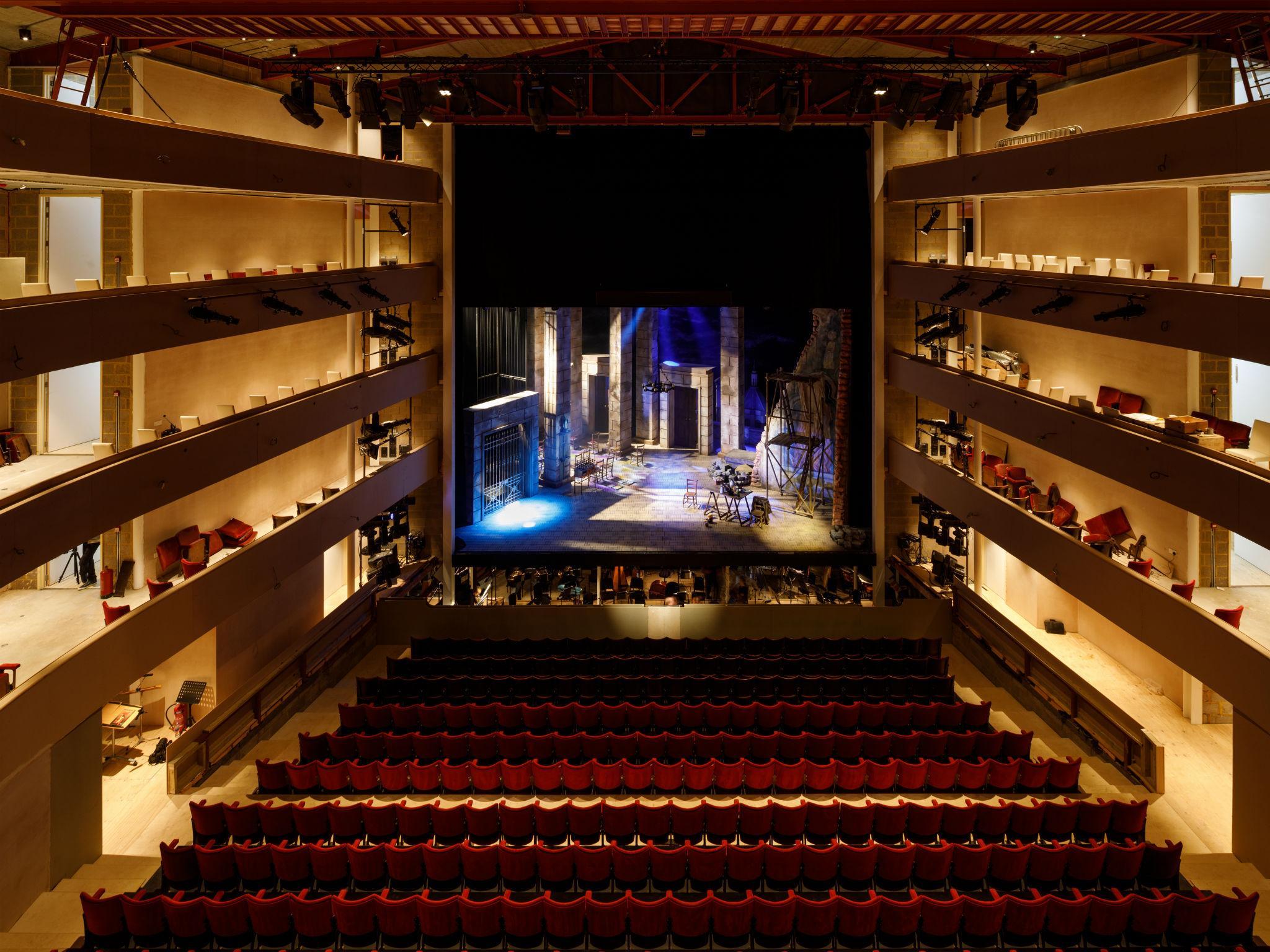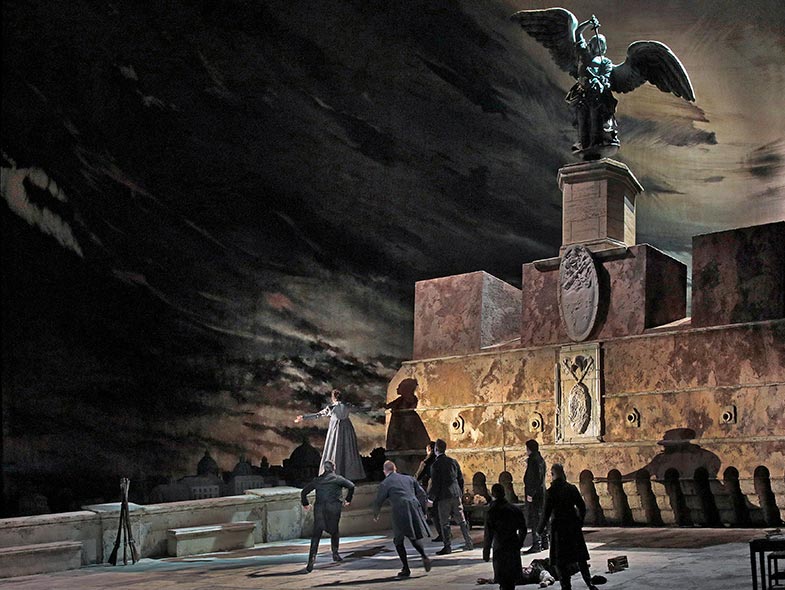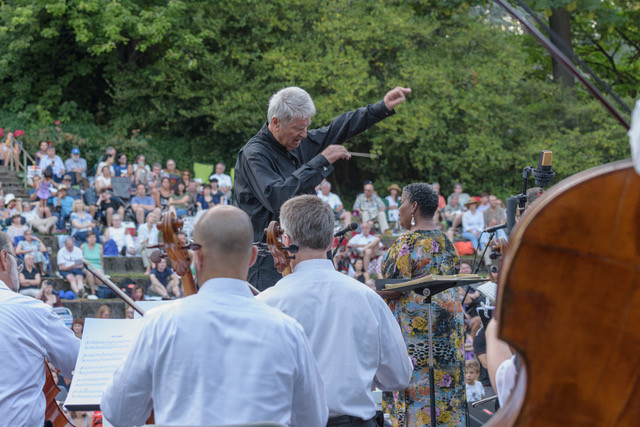


Outstanding performances from Sadhbh Dennedy (a slender, jodphured, vivacious Sharp-Ears) and James Oldfield (Forester) were complemented by a lively ensemble of animals and insects.

Exquisitely designed and lit by Chloe Lamford and Mark Doubleday, Davies's show balanced beautifully the story of Sharp-Ears's brief, passionate life and the Forester's conflicting feelings of tenderness and frustration. Jo Davies's touching, intelligent production of The Cunning Little Vixen for the Royal College of Music made me wish again that the conservatoires would take their shows on tour. Holland Park aside, the thriftiest way to maintain a serious opera habit is to go to school. There are no animals to charm, the slaves are green floor-mops, and the rest of the cast are variously dressed as 18th-century imperialists, health-spa customers and Hitchcock vamps. Jane Glover's tweed-and-talcum conducting ensures several seconds of musty silence between the announcement of the three E-flat chords at the beginning of Act II and their belated arrival. Mindful of this, perhaps, movement is kept to a minimum. Designed by Tom Phillips, the most interesting aspect of Callow's Flute is the intricately painted floor.

I hope Andrew Staples keeps in good health, for his elegantly sung Tamino is the most persuasive reason to spend three and a quarter hours with Simon Callow's muddled, joyless production. Would that the same could be said of The Magic Flute. Why torture your prisoners in a dungeon when you can use the street? Why organise a firing-squad when a can of petrol will do? But by setting the opera in a year when princesses partied with pop stars and middle-class students threw Molotov cocktails, Barlow has narrowed the gap between the opera and us and tightened the vice in which Scarpia, the chief of police, holds Rome. If eyebrows were raised when it was announced that Opera Holland Park would stage Tosca, they should now be furrowed in admiring disbelief at how ingeniously director Stephen Barlow and his designers Yannis Thavoris and Peter Mumford have resolved the spatial limitations of the temporary stage (impossible to leap from the Castello Sant'Angelo here). On the shutters of the Bar-Trattoria Farnese, a single phrase has been scrawled in angry red paint: Scarpia Bigotto! On the pavement an idealised blonde has been drawn in chalk, a Magdalene for modern times. Posters cover the walls of Sant'Andrea della Valle: some for the Communist Party, some for the Christian Democrats, some for la voce di 1968, Floria Tosca in a Callas pose. A priest cycles by, pursued by children with water-pistols. A battered Fiat is parked on a dusty piazza.


 0 kommentar(er)
0 kommentar(er)
